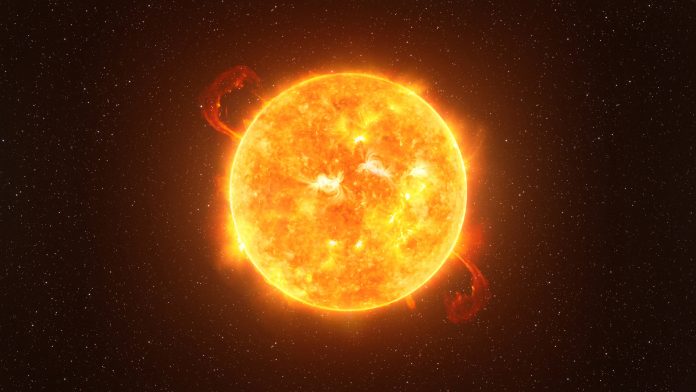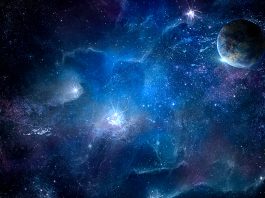An international team of astronomers have deciphered the reason for the enigmatic dimming of the bright orange Betelgeuse star.
The study, led by Miguel Montargès at the Observatoire de Paris, has provided an explanation for the observed dimming of the Betelgeuse star between late 2019 and early 2020, in which the bright orange star from the Orion constellation displayed a reduction of more than two-thirds of its brightness.
Their findings are published in Nature.
Through utilising the European Southern Observatory’s Very Large Telescope, the team were able to obtain images portraying how the stellar surface of the Betelgeuse star modified and darkened over time – most pronounced in its southern region – with this found to be caused by a dusty veil that shaded the star.
Montargès said: “For once, we were seeing the appearance of a star changing in real-time on a scale of weeks.”
The astronomers have identified that the formation of stardust was the cause of the abrupt dimming, as the surface of the star changes due to giant bubbles of gas that move, shrink, and swell within the star. Prior to its dimming, the Betelgeuse star emitted a substantial gas bubble – assisted by the star’s outward pulsation; upon its cooling, the heavier elements of the gas bubble condensed into solid dust.
Andrea Dupree, the co-author of the study and an astronomer at the Center for Astrophysics, captured evidence of dense, heated material permeating through the star a few months prior to the great dimming, employing the Hubble Space Telescope to do so.
She said: “With Hubble, we could see the material as it left the star’s surface and moved out through the atmosphere before the dust formed that caused the star to appear to dim.”
Dupree discovered that the material travelled at a speed of around 200,000 miles per hour as it was ejected from the surface of the Betelgeuse star to the outer atmosphere, forming a dust cloud that impeded the star’s light once the gas had cooled millions of miles away, eventually returning to normal brightness in April 2020. Dupree has been analysing the Betelgeuse star since 1985 and is continuing to examine it in the hopes of observing another gas bubble.
“Betelgeuse is a unique star; it is enormous and nearby, and we are observing material directly leaving the surface of the supergiant. How and where the material is ejected affects our understanding of the evolution of all star’s,” she commented.









